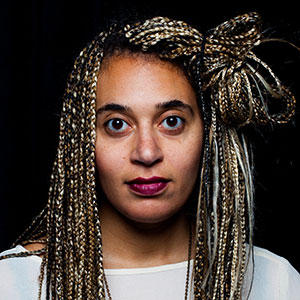
A view of the Martin Luther King Jr. Memorial in Washington, DC (Photo by Johnny Silvercloud/ flickr CC 2.0)
This post originally appeared at The Nation.
Welcome to The Majority, a new coalition encompassing more than 50 organizations and groups, including the Black Lives Matter Global Network. On Thursday, The Majority announced its first national campaign: Beyond the Moment. From April 4 to International Workers’ Day on May 1, participating organizations will hold a series of actions across the country aimed at raising awareness around issues including white supremacy, economic justice, reproductive justice, immigrant rights, LGBTQ rights, indigenous rights and attacks on Muslim communities. The focus, under the new administration, is to bring together activists, organizers and groups with different missions — from the Fight for $15 to indigenous land rights.
Beyond the Moment is the first major national campaign launched by the newly formed Majority, but it’s not exactly the first time we’ve heard from them. Many of the participating organizations come out of the Movement for Black Lives (M4BL), another BLM organizing coalition that released an official platform last August with a list of 40 policy recommendations and demands focusing on a wide range of issues including demilitarization of police forces, decriminalization of drugs and expanding unionization in industries that are largely nonunion, like on-demand economy jobs like Uber or Lyft. The platform was received as the first centrally planned document to emerge from BLM, a movement that had been criticized for being diffuse, and for failing to articulate policy goals. But that was before Donald Trump was elected, when many assumed the political future of the United States would be quite different.
This new organizing body, which involves many of the same players as in past iterations of BLM, comes three months into Donald Trump’s presidency. Organizers, however, are careful to point out that while the fight looks different under a Trump administration, the tenets of the movement, laid out back in August, remain the same. “These actions that we’re taking from April 4 to May 1 are a resistance against Trump and his administration, but it’s also part of a long-term strategy to build a world where people can live in dignity and where we can situate people at the margins to have power,” Patrisse Cullors, one of the three founders of BLM, told me over the phone.
BLM is often understood as a series of protests in response to the indiscriminate killings of black Americans by law enforcement, but the first day of action planned by the Majority, on April 4, will include protests in two dozen cities centered on the fight for a $15-an-hour minimum wage, an issue that disproportionately impacts people of color. It’s proof that BLM is working to become a broader movement.
“One place where you’ll see depth in the conversation is around protecting our communities,” Cullors told me. “That means from ICE raids, and from further criminalization and violence.” Cullors said that this new iteration of the movement is not just about “campaigns and strategic plans” but a broad-based movement that coalesces around the idea of sanctuary for all.
Marisa Franco, director of Mijente, a Latinx rights organization, is one of the organizers of Beyond the Moment, and echoes Cullors’s point about the need to embrace inclusivity. “We can’t say, ‘hey don’t let ICE on your campus’ and not call out over-policing of people of color on college campuses. We can’t celebrate local police who might consider not working with ICE but who over-police and won’t make those same proclamations for other communities of color,” Franco said.
The planned actions, between April 4 and May 1, may mark a shift into national action for the movement, but Cullors reminds me that BLM is a movement that is rooted in local communities. Every community faces different challenges, Cullors explained to me, and emphasized the importance of organizers to continue to do work to secure “protection” for individual communities after May Day.




